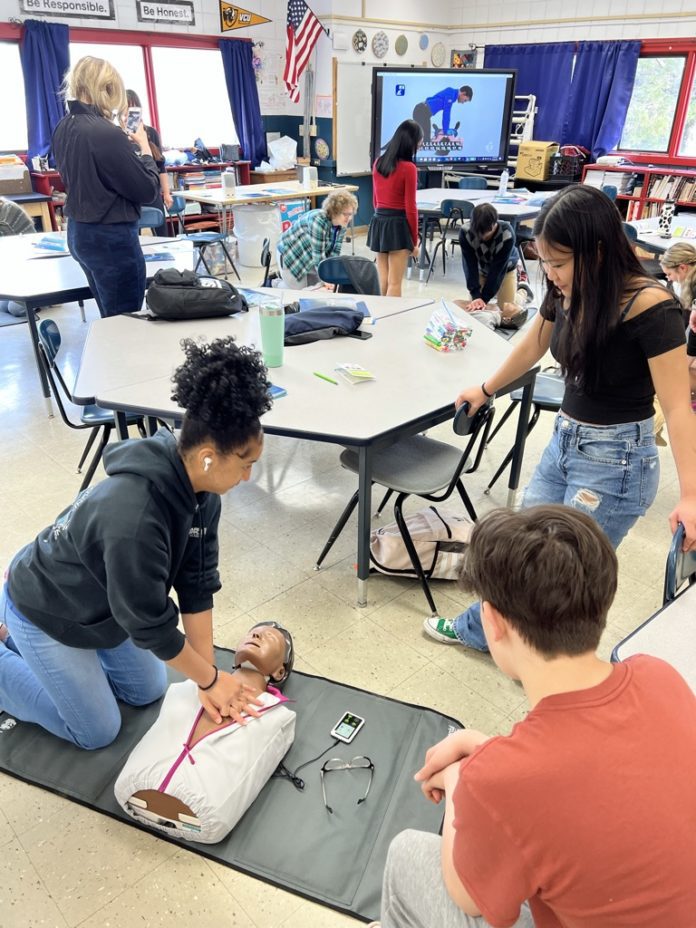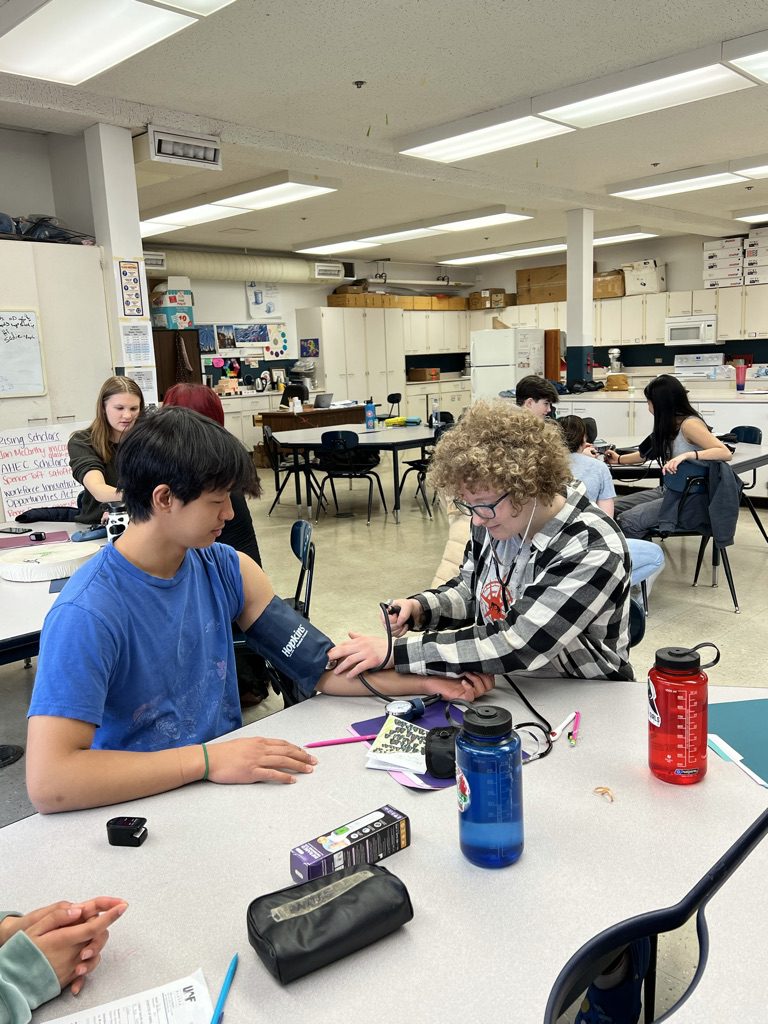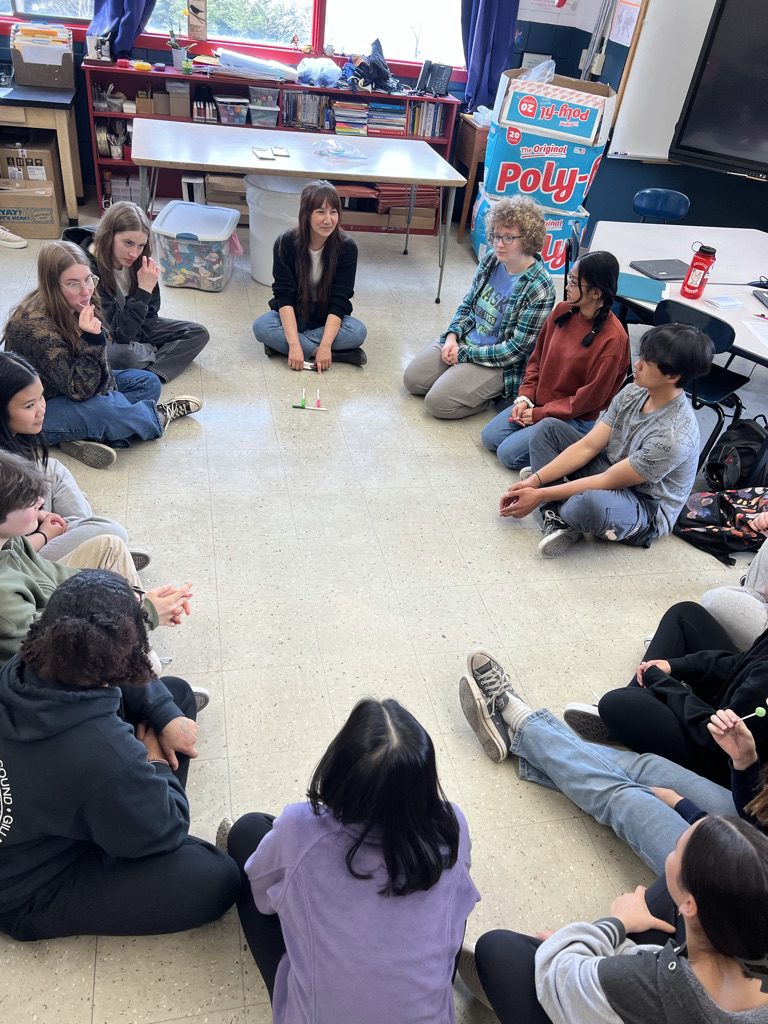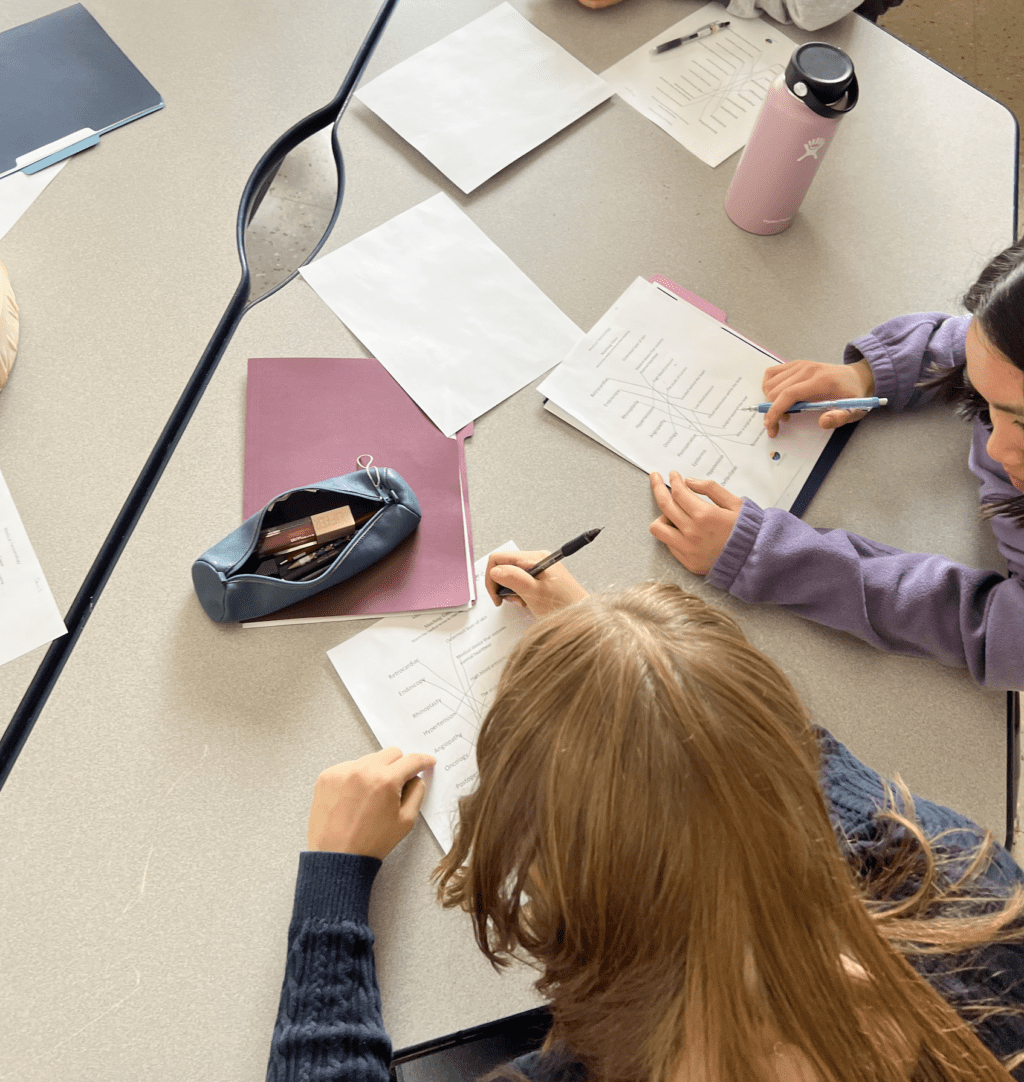
Thirteen local high school students are currently finishing up a course in health sciences, as part of a statewide initiative to teach young people about industries with workforce supply deficits.
From April 24 to April 28 the Health Science 110 course was offered to 9th, 10th, and 11th grade students in Cordova. There is a dual enrollment agreement with the University of Alaska Fairbanks that students who take this course will receive two college credits upon completion. The course is 30 hours over 5 days.

The mission of this statewide initiative is to offer a consistent program of study to encourage entry into Alaskan industries where more workers are needed. Welding and health sciences are the first two programs for industries with this need to be introduced.
The series of courses is coordinated by Sara Hottinger who is the district career and technical education coordinator, as well as a 7th-12th grade career and technical education teacher.
“The Career and Technical Education department at AK Department of Education has been instrumental in making this program successful for small, rural districts like ours,” said Hottinger. “They realize that small schools can’t support a full-time health science teacher but still want to produce graduates with interest and technical skills in the medical field.”
On Wednesday, about halfway through the course, Hottinger said a student told her they “could take this class every day of the year, I love it.”

Students had the opportunity to hear presentations from local health industry professionals Elizabeth King from Sound Alternatives and Nicole Piche from the Ilanka Health Clinic, as well as take a tour of the Cordova Community Medical Center.
Students have also worked all week on a final project building a simulated social media campaign that addresses a current public health concern.

Each class in the series will allow students to earn two college credits, so that by the end of the series they could earn up to eight credits. Students have no mandatory commitment to continue the series.
This statewide initiative is an example of a national trend to use work- or project-based intensive learning for young people to address labor and workforce shortages. Nationally, dual credit programs are being touted as a pipeline into well-paying careers.
The next course in this series of four courses is human services occupations and is tentatively scheduled for December 2023.





